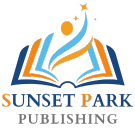Heading Element
“The first draft is just you telling yourself the story.” – Terry Pratchett
The Timeless Blueprint: Mastering the Three-Act Structure for Spellbinding Storytelling: In the world of storytelling, the Three-Act Structure is akin to the architectural blueprint of a magnificent building. It is the skeleton that holds the story together, the foundation upon which the flesh of characters, settings, and themes are molded. Whether you are a budding writer or an experienced author, mastering the Three-Act Structure is a quintessential skill in your storytelling arsenal. In this comprehensive guide, we will dissect the anatomy of the Three-Act Structure, weigh its pros and cons, and explore scenarios where this timeless framework can be employed to craft narratives that resonate with readers.

The Anatomy of the Three-Act Structure
“Plot is no more than footprints left in the snow after your characters have run by on their way to incredible destinations.” – Ray Bradbury
The Anatomy of the Three-Act Structure section breaks down the fundamental components of this classic storytelling framework into its three core acts: The Setup, The Confrontation, and The Resolution. It explains how the first act introduces characters and settings, the second act builds tension through conflicts, and the third act brings the story to its climax and resolution. This section is essential for authors to understand the basic structure that will serve as the backbone of their narrative, guiding the plot’s progression and pacing.
Act I: The Setup
The first act is where you lay the groundwork. It introduces the main characters, establishes the setting, and presents the initial situation or conflict. The culmination of Act I is the ‘inciting incident’, a pivotal event that propels the protagonist into the central conflict.
Act II: The Confrontation
Often referred to as the ‘rising action’, the second act is where the story gains momentum. The protagonist faces obstacles, tensions escalate, and the stakes get higher. This act is the meat of the story and should keep the readers hooked.
Act III: The Resolution
The final act is where all the threads of the plot are drawn together. It features the climax – the highest point of tension, and the resolution, where the central conflict is resolved, and the characters’ arcs are completed.
The Pros and Cons of the Three-Act Structure
“There is no rule on how to write. Sometimes it comes easily and perfectly; sometimes it’s like drilling rock and then blasting it out with charges.” – Ernest Hemingway
The Pros and Cons of the Three-Act Structure section provides a balanced analysis of the advantages and potential limitations of employing the Three-Act Structure in storytelling. It highlights the benefits such as clarity, focus, and pacing, while also addressing the potential drawbacks like predictability and creative constraints. This section is crucial for authors to make an informed decision on whether the Three-Act Structure aligns with their storytelling goals and creative vision.
The Pros and Cons of the Three-Act Structure: PROS
Pros
Clarity and Focus:
The Three-Act Structure provides a clear roadmap, helping writers to stay focused and avoid meandering subplots.
Pros
Pacing:
It naturally lends itself to well-paced storytelling, with a balance of exposition, action, and resolution.
Pros
Reader Expectations:
Readers are subconsciously familiar with this structure, and it meets their expectations of a satisfying story arc.
The Pros and Cons of the Three-Act Structure: CONS
Cons:
Predictability:
If not handled with creativity, the structure can be formulaic and predictable.
Cons:
Creative Constraints:
Some writers feel that the structure is too rigid and stifles creative freedom.
When to Utilize the Three-Act Structure
“The purpose of a storyteller is not to tell you how to think, but to give you questions to think upon.” – Brandon Sanderson
When to Utilize the Three-Act Structure section offers insights into the scenarios and genres where the Three-Act Structure is most effective, including genre fiction, screenwriting, and for debut authors. It explains how this structure is particularly beneficial in genres that rely on pacing and visual storytelling, and how it can be a valuable tool for new authors learning the mechanics of plot development. This section guides authors in identifying the right contexts for employing the Three-Act Structure to enhance their storytelling.
Genre Fiction:
In genre fiction, especially thrillers, mysteries, and romance, the Three-Act Structure is effective in delivering a satisfying reader experience.
Screenwriting:
It is widely used in screenwriting for movies and television, where pacing and visual storytelling are crucial.
Debut Authors:
For new authors, this structure can be a valuable tool to shape their first works and understand the mechanics of plot development.
The Three-Act Structure in Action: Statistics and Insights
According to a survey conducted by Writer’s Digest, over 70% of published authors have employed the Three-Act Structure in at least one of their works. Furthermore, an analysis of the top 100 bestselling novels of the last decade revealed that over 80% followed a clear Three-Act Structure.
Heading Element
“There is something delicious about writing the first words of a story. You never quite know where they’ll take you.” – Beatrix Potter
The Three-Act Structure, with its simple yet effective framework, is a timeless tool in the storyteller’s kit. It offers a scaffold upon which you can build complex characters, weave intricate plots, and create worlds that captivate the imagination of your readers. However, like any tool, it must be wielded with care and creativity. The structure is not a formula, but a guide – a starting point from which your story can take flight.
As an author, your challenge is to take this age-old structure and infuse it with your unique voice and vision. Use it to craft stories that not only entertain but also enlighten, challenge, and move the human spirit.
“A writer is someone for whom writing is more difficult than it is for other people.” – Thomas Mann
So, embrace the challenge, delve into the depths of your imagination, and wield the Three-Act Structure with the finesse of a master storyteller. Your readers await the magic only you can create. May the pages you fill be as boundless as your imagination. Happy writing!





Greetings from Carolina! I’m bored to tears at work so I decided to browse your site on my iphone during lunch break. I love the information you present here and can’t wait to take a look when I get home. I’m surprised at how fast your blog loaded on my cell phone .. I’m not even using WIFI, just 3G ..
Anyways, excellent site!
Thanks for sharing your info. I really appreciate your efforts and I am waiting for your next write ups thank you once again.
I have been surfing on-line more than three hours these days, but I by no
means found any fascinating article like yours. It’s pretty value enough for me.
In my view, if all webmasters and bloggers made just right content material as you did, the web shall be a lot more useful than ever before.